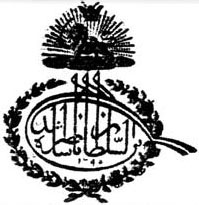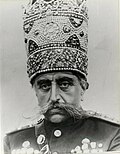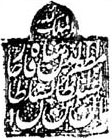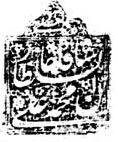Top Qs
Timeline
Chat
Perspective
Qajar dynasty
Iranian royal dynasty of Turkic origin (1789–1925) From Wikipedia, the free encyclopedia
Remove ads
The Qajar dynasty (Persian: دودمان قاجار, romanized: Dudemâne Ǧâjâr)[a] is a formerly aristocratic (and from 1789-1925, royal) Iranian[1] dynasty that gained prominence in the early 16th century[2] as heads of the Turkoman Qajar tribe of the Qizilbash confederacy.[3] The dynasty ruled Iran from 1789 till 1925, upon the Unification of Iran (1779–1796) by Mohammad Khan Qajar (r. 1789–1797).
The dynasty's effective rule in Iran ended in 1925 when Iran's Majlis, convening as a constituent assembly on 12 December 1925, declared Reza Shah, a former brigadier-general of the Persian Cossack Brigade, as the new shah of Pahlavi Iran.
Remove ads
Head of the Qajar tribe
Summarize
Perspective

The Qajar dynasty, as the ruling lineage, held prominent positions as tribal heads long before establishing imperial rule, leveraging their military prowess and tribal alliances to unify the country amid post-Safavid chaos.[5]
During the establishment of the Safavids. When Ismail led the 7,000 tribal soldiers on his successful expedition from Erzincan to Shirvan in 1500/1501, a contingent of Qajars was among them. After this, they emerged as a prominent group within the Qizilbash confederacy,[6] who were made up of Turkoman warriors and served as the main force of the Safavid military.[7] Despite being smaller than other tribes, the Qajars continued to play a major role in important events during the 16th century.[8]
The immediate ancestor of the Qajar monarchs, Shah Qoli Khan of the Quvanlu of Ganja, married into the Quvanlu Qajars of Astarabad. His son, Fath Ali Khan (born c. 1685–1693) was a renowned military commander during the rule of the Safavid shahs Sultan Husayn and Tahmasp II.[9] He was killed in 1726. Fath Ali Khan's son Mohammad Hasan Khan Qajar (1722–1758) was the father of Mohammad Khan Qajar and Hossein Qoli Khan (Jahansouz Shah), father of "Baba Khan," the future Fath-Ali Shah Qajar. Mohammad Hasan Khan was killed on the orders of Karim Khan of the Zand dynasty.[10]
Remove ads
List of Qajar monarchs

Remove ads
Qajar imperial family
Summarize
Perspective
The Qajar Imperial Family in exile is currently headed by the eldest descendant of Mohammad Ali Shah, Sultan Mohammad Ali Mirza Qajar, while the Heir Presumptive to the Qajar throne is Mohammad Hassan Mirza II, the grandson of Mohammad Hassan Mirza, Sultan Ahmad Shah's brother and heir. Mohammad Hassan Mirza died in England in 1943, having proclaimed himself shah in exile in 1930 after the death of his brother in France.
Today, the descendants of the Qajars often identify themselves as such and hold reunions to stay socially acquainted through the Kadjar (Qajar) Family Association,[12] often coinciding with the annual conferences and meetings of the International Qajar Studies Association (IQSA). The Kadjar (Qajar) Family Association was founded for a third time in 2000. Two earlier family associations were stopped because of political pressure. The offices and archives of IQSA are housed at the International Museum for Family History in Eijsden.
Qajar dynasty since 1925
- Heads of the Qajar Imperial Family
The headship of the Imperial Family is inherited by the eldest male descendant of Mohammad Ali Shah.
- Sultan Ahmad Shah Qajar (1925–1930)
- Fereydoun Mirza (1930–1975)
- Sultan Hamid Mirza (1975–1988)
- Sultan Mahmoud Mirza (1988)
- Sultan Ali Mirza Qajar (1988–2011)
- Sultan Mohammad Ali Mirza (2011–present)
- Heirs Presumptive of the Qajar dynasty
The Heir Presumptive is the Qajar heir to the Persian throne.
- Sultan Ahmad Shah Qajar (1925–1930)
- Mohammad Hassan Mirza (1930–1943)
- Fereydoun Mirza (1943–1975)
- Sultan Hamid Mirza (1975–1988)
- Mohammad Hassan Mirza II (1988–)
Extended Family
- Qajar descendants of Jwamer Agha, Princesses of Qajar, great-great or great-great-great grandchildren of Naseruddin Shah Qajar.[13][14][15]
Titles and styles

The shah and his consort were styled Imperial Majesty. Their children were addressed as Imperial Highness, while male-line grandchildren were entitled to the lower style of Highness; all of them bore the title of Shahzadeh or Shahzadeh Khanoum.[17]
The Qajar Shahs also adopted grandiose titles that reflected their perceived divine authority and centrality in the Persian monarchy.[18][page needed] These titles were not merely honorific but served to legitimize their rule amidst internal and external challenges, blending pre-Islamic, Islamic-Shi’i, and nomadic elements of Persian governance.[19] Among these titles were;
- Shahanshah of Iran
- Zell'ollah (Shadow of God [on earth])
- Qebleh-ye 'ālam (Pivot of the Universe)
Remove ads
Notable members
Summarize
Perspective
- Politics

- Princess Turan Amirsoleimani, she was the third wife of Reza Shah, with whom she had one son Gholam Reza Pahlavi
- Prince Abdol-Hossein Farmanfarma, prime minister of Iran
- Mohammad Mosaddegh, prime minister of Iran and nephew of Prince Abdol Hossein Mirza Farmanfarma.
- Prince Firouz Nosrat-ed-Dowleh III, son of Prince Abdol-Hossein Farmanfarma, foreign minister of Iran
- Hossein Khan Sardar, last ruler of the Erivan Khanate administrative division
- Prince Majd ed-Dowleh Amirsoleimani, one of Iran's most influential politicians of his time. He was a key court figure throughout the reigns of several Qajar Shahs, including Nasser al-Din Shah, Mozaffar ad-Din Shah, Mohammad Ali Shah, and Ahmad Shah.
- Amir Abbas Hoveyda, Iranian economist and politician, prime minister of Iran from 1965 to 1977, a Qajar descendant on his maternal side
- Ali Amini, prime minister of Iran
- Prince Iraj Eskandari, Iranian communist politician
- Princess Maryam Farman Farmaian, Iranian communist politician, founder of the women's section of the Tudeh Party of Iran
- Ardeshir Zahedi, Iranian diplomat, Qajar descendant on his maternal side.
- Prince Sabbar Farmanfarmaian, health minister in Mosaddeq cabinet
- Abdol-Hossein Sardari, Consul General at the Iranian Embassy in Paris 1940–1945; helped and saved the lives of Jews in danger of deportation by issuing them with Iranian passports. A Qajar Qoyunlu and through his mother a grandson of Princess Malekzadeh Khanoum Ezzat od-Doleh, the sister of Nasser ed-Din Shah.
- Aga Khan III, President of the League of Nations from 1937 to 1938, one of the founders and the first president of the All-India Muslim League and the 48th Imam of the Nizari Ismaili Muslims.
- Military
- Aleksander Petrovich Reza Qoli Mirza (1869-1941)
- Feyzullah Mirza Qajar (1872-1920)
- Amanullah Mirza Jahanbani(1869-1912)[20]
- Nader Jahanbani (1928-1979)
- Prince Amanullah Mirza Qajar, Imperial Russian, Azerbaijani, and Iranian military commander
- Prince Feyzulla Mirza Qajar, Imperial Russian and Azerbaijani (ADR) military commander
- Prince Ali Qulu Mirza Qajar, Imperial Russian military commander, having the rank of Lieutenant Colonel
- Prince Aleksander Reza Qoli Mirza Qajar, Imperial Russian military leader, commander of Yekaterinburg (1918)
- Prince Amanullah Jahanbani, senior Iranian general
- Nader Jahanbani, general and vice-deputy chief of the Imperial Iranian Air Force
- Brig. General Changiz Voshmgir, deputy commander-in-chief of the Ground Forces of the Imperial Iranian Army, son of Hassan Khan Shoja Saltaneh & Bashir-ol-Moluk
Religion

- Aga Khan IV, the 49th Imam of Nizari Ismailism, a denomination of Isma'ilism within Shia Islam.
- Women's rights
- Princess Taj-al-Saltaneh Qajar, daughter of Naser-din-Shah, co-founder of the first Iranian women's rights movement Anjoman Naswan, author of a memoir, painter
- Princess Mohtaram Eskandari, intellectual and pioneering figures in Iranian women's movement.[22]
- Iran Teymourtash (Légion d'honneur), journalist, editor and publisher of the newspaper Rastakhiz, founder of an association for helping destitute women. Daughter of court minister Abdolhossein Teymourtash and through both her maternal grandparents a Qajar.[23]
- Literature
Princess Taj-al-Saltaneh Qajar, daughter of Naser-din-Shah, First Iranian woman to write a memoir, co-founder of the first Iranian women's rights movement Anjoman Naswan, author of a memoir, painter
- Prince Iraj, Iranian poet and translator
- Sadegh Hedayat, a Qajar descendant through the female line
- Anvar Khamei, the Iranian economist, politician, and sociologist.
- Entertainment
- Sepand Amirsoleimani, Iranian actor.
- Kamand Amirsoleimani, Iranian actress.
- Gholam-Hossein Banan, Iranian musician and singer, Qajar descendant on his maternal side.[24]
Remove ads
Family tree
Mothers of Qajar Shahs
See also
Notes
Citations
Sources
External links
Wikiwand - on
Seamless Wikipedia browsing. On steroids.
Remove ads



















